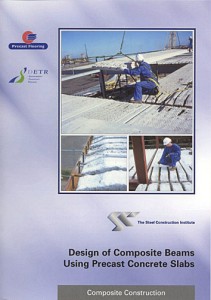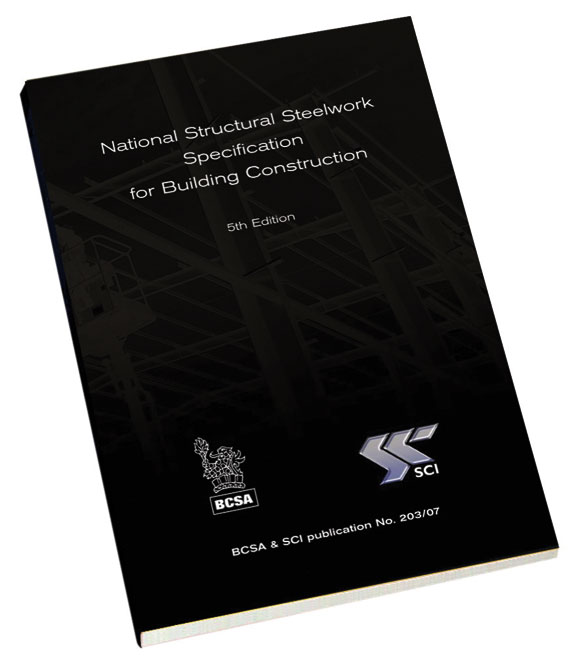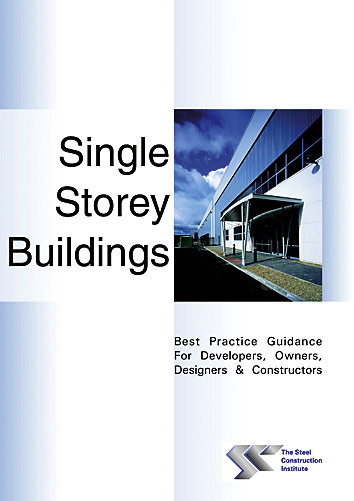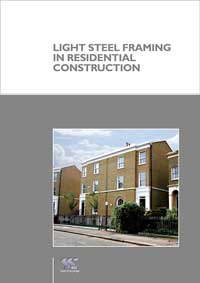Technical
Design of composite beams using precast concrete slabs
 Precast concrete floors are widely used in building construction, but there is little detailed design guidance on their application in steel framed buildings. It is estimated that close to 50% of floors used in steel framed buildings in the UK use hollow core or solid plank slabs. Most of these applications are in regular steel construction in which the precast slabs sit on the top flange of the beams, but there is an increasing number of composite frames and slim floor constructions where the precast slabs are designed to interact structurally with the steel frame. The use of hollow core or solid plank precast units offer benefits in terms of cost (the long spanning capabilities of the precast slabs lead to fewer secondary beams) as well as the advantages offered by composite construction.
Precast concrete floors are widely used in building construction, but there is little detailed design guidance on their application in steel framed buildings. It is estimated that close to 50% of floors used in steel framed buildings in the UK use hollow core or solid plank slabs. Most of these applications are in regular steel construction in which the precast slabs sit on the top flange of the beams, but there is an increasing number of composite frames and slim floor constructions where the precast slabs are designed to interact structurally with the steel frame. The use of hollow core or solid plank precast units offer benefits in terms of cost (the long spanning capabilities of the precast slabs lead to fewer secondary beams) as well as the advantages offered by composite construction.
This publication provides guidance on the design of steel beams acting compositely with precast concrete slabs in multi‑storey buildings. The design basis is generally in accordance with BS 5950-3, supplemented by recommendations from Eurocode 4 and data from tests; it applies to hollow core units of 150 to 260 mm depth, and to solid precast planks.
The guidance also emphasises the importance of the design of the steel beam in the non composite construction stage, where out-of-balance loads can occur during installation of the precast concrete units.
A step-by-step design procedure is given for composite beams using various forms of precast concrete units, with or without a concrete topping. This is supplemented by a fully worked design example for a composite beam in a 15.8 m x 7.2 m grid, and a series of design tables for concept design.
Catalogue Ref: P287
Authors: S J Hicks and R M Lawson
ISBN 1 85942 139 3, 102 pp, A4 paperback, June 2003













